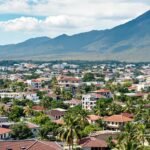Mexico continues to be a prime destination for American migrants seeking economic relief, though the landscape is evolving rapidly, according to recent trends. As the largest immigrant group in Mexico, Americans have traditionally relocated south of the border not only for cultural experiences and natural beauty but increasingly as economic refugees.
For decades, American retirees have found that their Social Security benefits stretch significantly further in Mexico than in the United States. Healthcare costs and daily expenses remain substantially lower despite global inflation affecting Mexican prices.
More recently, younger Americans and families have joined this migration pattern. Taking advantage of remote work opportunities, these digital professionals have been able to maintain U.S.-level incomes while enjoying Mexico’s lower cost of living, creating what some describe as “gaming the system.”
However, this economic advantage appears to be diminishing. The job market for remote workers is tightening due to economic uncertainty and the rapid advancement of artificial intelligence. Many online positions that once offered financial security to American expatriates are becoming scarcer or disappearing altogether.
The influx of digital workers has also created tensions in some Mexican communities, where locals face rising prices for housing and services. Many Mexican neighborhoods have experienced significant rent increases and cost-of-living adjustments that outpace local wage growth.
Unlike Mexican citizens who often rely on extended family networks for support during economic hardship, American migrants typically lack these safety nets, potentially creating additional vulnerability as economic conditions shift.
Despite these challenges, Mexico remains significantly more affordable than the United States for many basic necessities, suggesting that even with changing economic dynamics, the country will likely continue to attract Americans seeking financial relief.
Source: Mexico News Daily


Leave a Reply